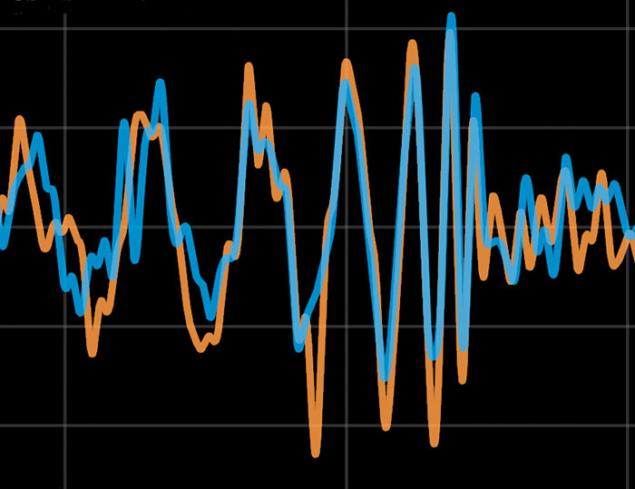
After a brief period of revision, this module looks closely at the relations between the principal continuous distributions, using moment generating functions to determine some properties. The module then
considers confidence intervals and hypothesis tests in the context of the mean and variance of a distribution. After examining bivariate distributions the module ends by considering the principal methods for
estimation of unknown parameters. The module uses the R software environment for statistical computing and graphics.
On completion of the module students should be able to:
-Use tables of the t-, F-, and chi-squared distributions.
- Determine a moment generating function (mgf) and understand the
importance of the one-to-one correspondence between an mgf and a pdf.
- Understand the notions of Type I and Type II errors.
- Carry out hypothesis tests concerning means and variances.
- Determine confidence intervals for means, variances and differences
between means.
- Handle bivariate distributions, understanding the relations between
joint, marginal and conditional distributions.
- Determine maximum likelihood and least squares estimates of unknown
parameters.
- Determine maximum likelihood estimates of unknown parameters.
- Use R for the data analysis examples of the module.
Syllabus
REVISION
Descriptive statistics using R. Events and their probabilities. Conditional probability. Independence.
Discrete random variables: probability mass functions; Bernoulli trials; binomial distribution; hypergeometric distribution.
Continuous random variables: probability density functions (pdf); cumulative distribution function (cdf); normal distribution.
Use of tables. Standardization. Linear combinations of normal variables.
CONTINUOUS DISTRIBUTIONS
Gamma distribution family. Chi-squared (relation to normal). Exponential (relation to Poisson).
The t-distribution (Use of tables, relation to normal and chi-squared distributions).
The F-distribution (Use of tables, relation to t- and chi-squared distributions).
Moment Generating Functions.
Additivity of normal and chi-squared distributions.
Basic law of large numbers. Proof of central limit theorem.
CONFIDENCE INTERVALS AND HYPOTHESIS TESTS
Distributions of the sample mean and of the difference between means.
Null and alternative hypotheses. p-values. Type I and II errors. Power curve.
One-sided and two-sided tests for a population mean (variance known and unknown).
Hypotheses about means.
Distributions of the sample variance and of a ratio of two variances.
Hypotheses about variances.
Confidence interval for mean (known or normal and unknown) .
Confidence interval for a difference between means (known variances, or normal distribution with common variance).
Confidence interval for a variance.
BIVARIATE DISTRIBUTIONS
Bivariate discrete random variables; joint distributions; marginal distributions; independence; covariance and correlation;
Bivariate continuous distributions;
Bivariate normal distribution.
ESTIMATION - MAXIMUM LIKELIHOOD AND LEAST SQUARES
The method of maximum likelihood.
considers confidence intervals and hypothesis tests in the context of the mean and variance of a distribution. After examining bivariate distributions the module ends by considering the principal methods for
estimation of unknown parameters. The module uses the R software environment for statistical computing and graphics.
On completion of the module students should be able to:
-Use tables of the t-, F-, and chi-squared distributions.
- Determine a moment generating function (mgf) and understand the
importance of the one-to-one correspondence between an mgf and a pdf.
- Understand the notions of Type I and Type II errors.
- Carry out hypothesis tests concerning means and variances.
- Determine confidence intervals for means, variances and differences
between means.
- Handle bivariate distributions, understanding the relations between
joint, marginal and conditional distributions.
- Determine maximum likelihood and least squares estimates of unknown
parameters.
- Determine maximum likelihood estimates of unknown parameters.
- Use R for the data analysis examples of the module.
Syllabus
REVISION
Descriptive statistics using R. Events and their probabilities. Conditional probability. Independence.
Discrete random variables: probability mass functions; Bernoulli trials; binomial distribution; hypergeometric distribution.
Continuous random variables: probability density functions (pdf); cumulative distribution function (cdf); normal distribution.
Use of tables. Standardization. Linear combinations of normal variables.
CONTINUOUS DISTRIBUTIONS
Gamma distribution family. Chi-squared (relation to normal). Exponential (relation to Poisson).
The t-distribution (Use of tables, relation to normal and chi-squared distributions).
The F-distribution (Use of tables, relation to t- and chi-squared distributions).
Moment Generating Functions.
Additivity of normal and chi-squared distributions.
Basic law of large numbers. Proof of central limit theorem.
CONFIDENCE INTERVALS AND HYPOTHESIS TESTS
Distributions of the sample mean and of the difference between means.
Null and alternative hypotheses. p-values. Type I and II errors. Power curve.
One-sided and two-sided tests for a population mean (variance known and unknown).
Hypotheses about means.
Distributions of the sample variance and of a ratio of two variances.
Hypotheses about variances.
Confidence interval for mean (known or normal and unknown) .
Confidence interval for a difference between means (known variances, or normal distribution with common variance).
Confidence interval for a variance.
BIVARIATE DISTRIBUTIONS
Bivariate discrete random variables; joint distributions; marginal distributions; independence; covariance and correlation;
Bivariate continuous distributions;
Bivariate normal distribution.
ESTIMATION - MAXIMUM LIKELIHOOD AND LEAST SQUARES
The method of maximum likelihood.